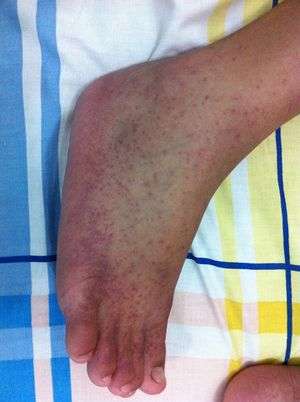Chikungunya
Background
- Aedes mosquito transmitted virus, originally found in West Africa but cases in the Americas beginning in 2013
- Frequently difficult clinically to differentiate from dengue fever
- Chikungunya” is a Tanzanian derived word meaning “that which bends up”[1]
Geographic Distribution

Chikungunya geographic distribution
Countries and territories where chikungunya cases have been reported (as of 10/2014):
| AFRICA | OCEANIA/PACIFIC ISLANDS | AMERICAS |
| Benin | American Samoa | Anguilla |
| Burundi | Federal States of Micronesia | Antigua and Barbuda |
| Cameroon | New Caledonia | Aruba |
| Central African Republic | Papua New Guinea | Bahamas |
| Comoros | Tonga | Barbados |
| Democratic Republic of the Congo | ASIA | Brazil |
| Equatorial Guinea | Bangladesh | British Virgin Islands |
| Gabon | Bhutan | Cayman Islands |
| Guinea | Cambodia | Colombia |
| Kenya | China | Costa Rica |
| Madagascar | India | Curacao |
| Malawi | Indonesia | Dominica |
| Mauritius | Laos | Dominican Republic |
| Mayotte | Malaysia | El Salvador |
| Nigeria | Maldives | French Guiana |
| Republic of Congo | Myanmar (Burma) | Grenada |
| Reunion | Pakistan | Guadeloupe |
| Senegal | Philippines | Guatemala |
| Seychelles | Saudi Arabia | Guyana |
| Sierra Leone | Singapore | Haiti |
| South Africa | Sri Lanka | Jamaica |
| Sudan | Taiwan | Martinique |
| Tanzania | Thailand | Montserrat |
| Uganda | Timor | Nicaragua |
| Zimbabwe | Vietnam | Panama |
| EUROPE | Yemen | Puerto Rico |
| Italy | Saint Barthelemy | |
| France | Saint Kitts and Nevis | |
| Saint Martin | ||
| Sint Maarten | ||
| Saint Lucia | ||
| Saint Vincent and the Grenadines | ||
| Suriname | ||
| Trinidad and Tobago | ||
| Turks and Caicos Islands | ||
| United States | ||
| US Virgin Islands | ||
| Venezuela |
Clinical Features
Acute

Chikungunya rash on foot2
- Fever typically greater than 39deg
- Polyarthralgias, bilateral and symmetrical
- Rash- maculopapular
- Myalgias
- Nausea and vomiting
- Lymphocytopenia
- Elevated LFTs
- AKI
- 3-7d incubation period
- Possible "saddle-back fever"
- Febrile again 1-2 days after afebrile period
- Afebrile period typically 4-10 days
Chronic
- May cause long-term symptoms, with long-term musculoskeletal pain from months to years post infection[2]
Differential Diagnosis
Travel-related skin conditions
Papules
- Insect bites
- Scabies
- Seabather's eruption
- Cercarial dermatitis (Swimmer's Itch)
Sub Q Swelling and Nodules
Ulcers
Linear and Migratory Lesions
- Cutaneous larvae migrans
- Photodermatitis
See also domestic U.S. ectoparasites
Evaluation
- CBC w diff, Cr, LFTs
- contact CDC for specialized testing; recommends tiger top tube
Management
Symptomatic treatment: acute symptoms usually resolve in 7-10d
Disposition
- Normally able to be treated as outpatient, unless complication
See Also
- Travel Medicine
External Links
References
- Burt FJ, Rolph MS, Rulli NE, et al. Chikungunya: a re-emerging virus. Lancet. 2012;379:662-671
- Gérardin et al. "Predictors of Chikungunya rheumatism: a prognostic survey ancillary to the TELECHIK cohort study." Arthritis research & therapy. Jan 9, 2013. 15(1). pmid=23302155. doi=10.1186/ar4137
This article is issued from
Wikem.
The text is licensed under Creative
Commons - Attribution - Sharealike.
Additional terms may apply for the media files.